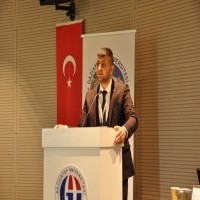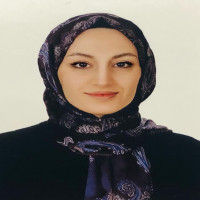Issue Editorial Board












Aim & Scope
İnönü University International Journal of Social Sciences aims to contribute to the body of knowledge in the field by publishing original research with scientific quality at both national and international levels in the field of social and human sciences and to play an effective role in the academic world. Our journal aims to make significant contributions to the literature on social sciences with innovative perspectives and research methods in its field.
The target audience of our journal includes researchers, academics, and experts working in the fields of social and human sciences.
Author Guidelines
Submitted articles must be original and have not been presented or published in any electronic or printed medium.
If an article has been presented at a conference or meeting, the authors must provide detailed information about the event, including the organization's name, date, and location. This information must be included as a footnote on the first page.
Suppose a research institution or fund supports a study, and publication is requested. In that case, the name of the supporting institution and the project number must also be provided as a footnote on the first page.
The submitted manuscripts must be prepared according to the journal's writing guidelines. The editor has the authority to return manuscripts that do not comply with the writing rules to the author or to send them back for corrections.
As of 2019, all works submitted to INIJOSS for evaluation must have the authors' ORCID number (Researcher ID Number). Authors must upload their works and ORCID numbers to the DergiPark system. The ORCID number can be obtained at https://orcid.org/signin. Research works from authors without an ORCID number will not be considered for evaluation.
The similarity rate in works should not exceed 15%. Submissions are checked for plagiarism using the intihal.net plagiarism detection software during the submission process.
Works submitted to INIJOSS must follow the INIJOSS template. Works not prepared according to the template will be rejected without evaluation.
Manuscripts must be uploaded to the system via the "Submit Article" section on the journal's page (https://dergipark.org.tr/en/pub/inijoss). Submissions via email or other methods are not accepted.
In addition to the manuscript files, authors are required to submit the following during the initial submission:
Article Upload Process:
- Dergipark User Page
- Process
- Submit Article
- Article Parent Data
- ... and so on, following the required steps in the system.
INIJOSS WRITING GUIDE:
- Writing: The papers must be written using Microsoft Office Word, in A4 paper size.
- Page and Paragraph Settings: Page Layout: Margins: "2.5 cm" on all sides, Header and Footer: "1.25 cm"
- Paragraph Layout: Justified text, with the first line of each paragraph indented "0.7 cm", no indentation on the left and right ("0 cm"), before the paragraph "0 nk" and after the paragraph "10 nk". Line spacing: "Exact 16 nk". There should be no line breaks between paragraphs.
- Font Style: The main text should be in "Cambria Normal 11 pt" for Latin script, and "Sakkal Majalla Normal 12 pt" for Arabic text.
- Length of the Paper: The length of the paper should not exceed 9,000 words.
- Author & Institution Information: In the first version uploaded to the DERGIPARK system, information such as the author's identity, ORCID, contact details, and institution should not be included, especially if the paper is derived from a project, conference, thesis, etc. This information will only be requested from the authors in the final version once the peer-review process is complete and the paper is accepted for publication. In the final version, under the main title, centered, the full name, institution, email, and ORCID number should be included. Adding authors or other contributors who were not included in the first version or in the Copyright Form is strictly prohibited as it would be considered unjust authorship. Papers lacking or with incomplete information will not be accepted.
- First Page of the Paper: The first page must contain the title in both Turkish and English, an abstract, and keywords. If the paper is written in Turkish, the Turkish title should be written in "Maiandra GD 14 pt, bold", and the English title in "Maiandra GD 12 pt, bold". The Turkish and English abstracts must start with "Öz/Abstract". The abstracts should have "0 cm" for left-right indentation, "0 nk" before and after, and a line spacing of "Single", 10 pt, in Maiandra Normal font. The abstracts must be between 200 and 250 words. In addition to the 200-250 word abstract, a broad summary (Extended Summary) of at least 750 words is required. Below each abstract, there should be at least 3 and at most 5 Turkish keywords and English keywords. The abstract should not contain equations, references, non-standard abbreviations, etc.
- Section Headings: Except for the sections titled "Introduction", "Conclusion and Evaluation", "References", and "Appendices", all other sections should be numbered. The numbering should follow the format: 1, 1.1, 1.2, 2, 2.1, 2.1.1, etc., and it should be done manually. Automatic numbering should not be used. All headings should be written in bold, aligned to the left, and with the first letter of each word capitalized. There should be one blank line before the main heading, but no blank space after it. Other headings should not have any blank spaces before or after them.
- Tables, Figures, and Graphs: Tables, figures, graphs, etc., should be centered within the writing area, numbered sequentially, and titled. The table numbers and titles should be written above the table as [Table 1. Table Title]. The numbers and titles of figures and graphs should be written below the figure/graph as [Figure 1. Figure/Graph Title]. The titles of tables, figures, and graphs should be written in bold, with the first letter of each word capitalized, and centered. The font size for the information within tables can be reduced to 8 pt. Tables that span more than one page should be kept in the text if they do not cause formatting issues; otherwise, they should be placed in the appendices. Explanations and sources related to tables, figures, and graphs should be provided without any space below and in 9 pt font. There should be one blank line before the table titles and after the figure/graph titles.
- Equations, Models, and Formulas: Equations, models, and formulas should be left-aligned, numbered sequentially, and the numbers should be right-aligned within parentheses.
- Footnotes: Explanatory notes that should not be included in the text should be placed in footnotes at the bottom of the page. Footnotes should be justified, written in Cambria 9 pt, and with single line spacing.
- In-Text Citations: APA 7 style should be used.
- References and Appendices: The References section should begin immediately after the Conclusion section. The references should be formatted according to APA 7 style. Sources should be listed in alphabetical order by the author’s last name. Works listed in the references should not be classified as books, articles, etc.
- Page Numbers: Page numbers should be centered at the bottom of each page, hidden on the first page.
REFERENCES
Both in-text citations and the references must be prepared according to the Publication Manual of the American Psychological Association (APA), Seventh Edition (2020).
When citing publications, preference should be given to the latest, most up-to-date sources. Citing the latest sources can help to ensure that the paper is relevant and timely, and that it reflects the latest developments in the field.
It is the responsibility of the authors to ensure the accuracy of the references in their article. All sources must be properly cited, and the citations must be formatted correctly.
To avoid plagiarism, it is necessary to acknowledge other sources in your paper through in-text citations. For every in-text citation, a corresponding reference list entry must be provided.
The APA in-text citation style includes the author's last name and the year of publication, such as (Field, 2005). If quoting directly from a source, the page number should also be added, such as (Field, 2005, p. 14).
If an ahead-of-print publication is cited, the DOI number should be provided in the reference list.
The reference styles for different types of publications are presented in the following examples.
Journal Article: Edwards, A. A., Steacy, L. M., Siegelman, N., Rigobon, V. M., Kearns, D. M., Rueckl, J. G., & Compton, D. L. (2022). Unpacking the unique relationship between set for variability and word reading development: Examining word- and child-level predictors of performance. Journal of Educational Psychology, 114(6), 1242–1256. https://doi.org/10.1037/edu0000696
Book Section: Zeleke, W. A., Hughes, T. L., & Drozda, N. (2020). Home–school collaboration to promote mindbody health. In C. Maykel & M. A. Bray (Eds.), Promoting mind–body health in schools: Interventions for mental health professionals (pp. 11–26). American Psychological Association. https://doi.org/10.1037/0000157-002
Books with a Single Author: Haslwanter, T. (2022). An introduction to statistics with Python. New York, NY: Springer International Publishing.
Editor(s) as Author: Rhodewalt, F. (Ed.). (2008). Personality and social behavior. Psychology Press.
Thesis: Valentin, E. R. (2019, Summer). Narcissism predicted by Snapchat selfie sharing, filter usage, and editing [Master's thesis, California State University Dominguez Hills]. CSU ScholarWorks. https://scholarworks.calstate.edu/concern/theses/3197xm925?locale=en
Websites: Chandler, N. (2020, April 9). What’s the difference between Sasquatch and Bigfoot? howstuffworks. https://science.howstuffworks.com/science-vs-myth/strange-creatures/sasquatch-bigfootdifference.htm
Epub Ahead of Print Articles: Muldoon, K., Towse, J., Simms, V., Perra, O., & Menzies, V. (2012). A longitudinal analysis of estimation, counting skills, and mathematical ability across the first school year. Developmental Psychology. Epub ahead of print. doi:10.1037/a0028240.
In the seventh edition, up to 20 authors should now be included in a reference list entry. For sources with more than 20 authors, after the 19th listed author, any additional authors' names are replaced with an ellipsis (…) followed by the final listed author's name:
Author, A. A., Author, B. B., Author, C. C., Author, D. D., Author, E. E., Author, F. F., Author, G. G., Author, H. H., Author, I. I., Author, J. J., Author, K. K., Author, L. L., Author, M. M., Author, N. N., Author, O. O., Author, P. P., Author, Q. Q., Author, R. R., Author, S. S., . . . Author, Z. Z.
Main Points:
All submissions (except letters to the editor) should include 3–5 key points, summarizing the study’s significance in a clear, straightforward manner.
Supplementary Materials
- Submit as separate files (e.g., videos, datasets).
- No page numbers required.
PRODUCTION PROCESS
Manuscripts submitted to the İnönü University International Journal of Social Sciences undergo a rigorous evaluation and production process. Initially, all submissions are screened for compliance with the journal’s formatting and submission guidelines. Suitable manuscripts then proceed to a double-anonymized peer review by experts in the field. Once the peer review process is completed and the manuscript is accepted, it undergoes language and technical editing to ensure clarity and accuracy. In the final stage, the manuscript is formatted, typeset, and prepared for publication in the relevant issue of the journal.
Ethical Principles and Publication Policy
PUBLICATION ETHICS
İnönü University International Journal of Social Sciences aims to adhere to the guidelines and core practices set forth by several organizations, including the Committee on Publication Ethics (COPE) guidelines and the Principles of Transparency and Best Practice in Scholarly Publishing (joint statement by COPE, DOAJ, OASPA, WAME). These guidelines and recommendations are designed to promote transparency, integrity, and best practices in scholarly publishing.
By adhering to these standards, the journal aims to ensure that the research it publishes is of high quality and meets the ethical standards of the scientific community.
ETHICAL PRINCIPLES AND PUBLICATION POLICY
Ethics Committee Approval and Informed Consent
Articles published in INIJOSS must clearly state whether ethical committee approval and/or legal/special permissions are required. If such permissions are needed, it should clearly state from which institution the consent was obtained, the date of approval, and the decision or reference number.
Click here for the "Scientific Research and Publication Ethics Guidelines," which were prepared to determine the ethical rules to be followed in scientific research, studies, publications, and activities, as well as the duties, authorities, responsibilities, and procedures of the scientific research and publication ethics committees to be established within higher education institutions.
If a study is exempt from ethical approval, authors must submit a statement explaining the exemption. An article submitted without ethical approval will follow COPE's guidelines to evaluate ethical concerns. Articles without ethical approval may be rejected in cases where the issue is significant.
For studies involving human subjects, authors must confirm that written informed consent has been obtained from all participants, and the researchers should keep the consent form. For research involving children under the age of eighteen, permission should be obtained from the parents or guardians. In surveys or interviews, consent for the use of data must also be confirmed. Personal information should be anonymized unless explicit consent for identification is given.
Authors are responsible for maintaining the anonymity and confidentiality of participants, particularly in photographs. Signed release forms must be obtained for all images, approval for publication should be secured, and all conditions should be specified. This approval should be clearly stated in the Methods section.
Plagiarism and Ethical Misconduct
All submissions undergo multiple screenings during the peer review and/or production processes using similarity detection software. When citing previous works, ensure that all material is properly referenced. Copying text, tables, or illustrations from any source (journal articles, books, theses, electronic media, etc.) and presenting them as one's own is considered plagiarism, even if a reference is provided. Listing the source in the 'References' section does not absolve authors of responsibility for plagiarism.
Authors are strongly encouraged to avoid any form of plagiarism or ethical misconduct, as illustrated below:
- Citation Manipulation: Refers to inflating citation counts through self-citation, excessive citation of the same journal, or citation stacking, which distorts academic recognition.
- Self-Plagiarism (Text Recycling): Involves reusing sections or sentences from an author's prior work without proper citation, constituting a form of plagiarism.
- Salami Slicing: The unethical practice of publishing multiple articles using the same data set, hypotheses, and methods from a single study.
- Data Fabrication: The creation of false data not supported by actual research or experiments, considered a serious breach of research integrity.
- Data Manipulation/Falsification: Involves altering data, such as modifying images or removing outliers, to mislead or misrepresent findings.
In cases of suspected misconduct (e.g., plagiarism, citation manipulation, or data falsification), the Editorial Board will follow COPE guidelines to ensure fair, transparent, and consistent handling of allegations.
OPEN ACCESS POLICY
All articles published in the Inönü University International Journal of Social Sciences are permanently accessible online without any payment or registration requirement. While authors retain the copyright to their works, they allow third parties to share, reproduce, and distribute the content in accordance with the journal's Copyright and Ethics policy.
Starting from 2024, all published content will be licensed under the Creative Commons Attribution-NonCommercial 4.0 International License (CC BY-NC 4.0), allowing non-commercial use, distribution, and modifications, provided that proper attribution is made to the original source.
Before 2024, content was licensed under traditional copyright, but the archive was freely accessible to authors and other users.
All journal content is freely accessible at https://dergipark.org.tr/en/pub/inijoss.
COPYRIGHT POLICY
A Copyright Agreement and Acknowledgement of Authorship form should be submitted with all manuscripts.
Articles published in the İnönü University International Journal of Social Sciences are Open Access and distributed under the Creative Commons Attribution-NonCommercial 4.0 International License (CC BY-NC 4.0). This allows third parties to share and adapt the content for non-commercial purposes, provided that proper attribution is made to the original work.
PRICE POLICY
No fees are charged to authors or institutions for submission or publication. All journal expenses are covered by İnönü University, and there are no submission or publishing fees for accepted articles.
ADVERTISING POLICY
İnönü University International Journal of Social Sciences accepts digital advertisements on its website, provided they are approved by the journal's Editorial Board and management. All advertisements must be clearly labeled as such. Advertisers have no influence on editorial decisions or advertising policies.
For advertising inquiries, please contact the Editorial Office (inueditorial@inonu.edu.tr).
PEER REVIEW DETAILS
İnönü University International Journal of Social Sciences maintains a rigorous and transparent double-anonymized peer-review process to ensure the highest standards of academic integrity. Manuscripts are subjected to this process, where both authors and reviewers remain anonymous to one another.
Each manuscript is evaluated by at least two independent external reviewers who are experts in the relevant field.
While authors may suggest potential reviewers, the final selection is made by the editor, who is not obliged to follow the author's recommendations. Confidentiality is paramount throughout the review process, and reviewers must keep the manuscript confidential, sharing it only with the editor's consent. Reviewers provide timely, unbiased, evidence-based, and constructive feedback to improve the quality of the manuscript. Any suspected research misconduct must be reported to the editor confidentially to uphold the process's integrity. The journal ensures transparency by publicly sharing information about the review process, selection criteria, and appeals procedure and publishing key metrics like acceptance rates and publication timelines. The final decision on whether a manuscript is accepted, revised, or rejected rests with the Editor-in-Chief, who considers recommendations from Field Editors.
Reviewers must disclose any potential conflicts of interest before accepting an invitation to review, and all communications between editors and reviewers are confidential. External editors handle manuscripts submitted by editorial board members to ensure impartiality, and these external editors must also disclose any conflicts of interest. If the peer-review process deviates from standard procedures, the type of review will be indicated in the article to maintain transparency and accountability.
REVISION DETAILS
Manuscripts that require "minor revision" or "major revision" will receive a decision letter from the Editor-in-Chief, which includes the reviewers' and editors' comments, along with a deadline for resubmission. Authors must submit a revised manuscript and a detailed "Response to the Reviewers" document, which addresses each comment individually. The response should explain the revisions made and specify the corresponding line numbers in the manuscript. An annotated version of the manuscript highlighting the changes must also be provided. Revised manuscripts must be submitted within the deadline specified in the decision letter. Failure to meet the deadline may result in the rejection of the revision. If additional time is needed, authors should request an extension before the original deadline expires.
AUTHORSHIP CRITERIA
Authors of submissions reporting research findings must meet all four criteria established by the International Committee of Medical Journal Editors (ICMJE):
- Substantial contributions to the conception or design of the work or the acquisition, analysis, or interpretation of data for the work;
- Drafting the work or revising it critically for important intellectual content;
- Final approval of the version to be published;
- Agreement to be accountable for all aspects of the work, ensuring that questions related to the accuracy or integrity of any part are appropriately investigated and resolved.
Before submission, authors should determine who qualifies for authorship and in what order authors will be listed. The editors of the İnönü University Journal of Culture and Art do not resolve authorship disputes. Any changes to the number or order of authors after the initial submission must be explained in writing to the Chief Editor. The editors reserve the right to refer any authorship irregularities to the research officer or appropriate academic ethics authority at the institution or employer of the first or corresponding author.
Authors may use CRediT (Contributor Roles Taxonomy) to provide information about individual contributions at the time of submission.
Declaration of Interests
Any potential financial or non-financial competing interests, including relationships with editorial associations, commercial editing companies, medical communications companies, or other organizations interested in the submission, must be disclosed at the end of the manuscript, just before the References section.
Funding Information
All sources of funding must be acknowledged at the end of the manuscript. Authors should specify the role of the study sponsor(s), if applicable, in the study design, data collection, analysis, interpretation, report writing, and the decision to submit the manuscript for publication. If the funding source had no involvement in these areas, the authors should clearly state this.
The Role of Artificial Intelligence (AI) in Manuscript Preparation
İnönü University International Journal of Social Sciences follows the Committee on Publication Ethics (COPE) guidelines regarding the use of AI and AI-assisted technologies in manuscript preparation. Authorship entails responsibilities that only humans can fulfill, and authors are accountable for the originality and integrity of their work.
AI tools may be used for language editing; however, their use must be explicitly acknowledged in the manuscript. AI cannot be listed as an author, as authorship requires intellectual contributions, critical reasoning, and accountability—elements that AI cannot provide. Maintaining these standards is essential to preserving the quality and originality of published research.
Post-Publication Correction Requests and Retractions Policy
All post-publication correction requests are subject to editorial review. The Editorial Board evaluates the necessity and appropriateness of corrections based on the nature of the error, its impact on the article, and the supporting evidence. If approved, the correction will be made in the journal’s archive. The journal follows the COPE guidelines.
Article Withdrawal (Pre-Publication)
Withdrawal applies only to articles in press, which are early versions of articles that may contain errors, accidental duplicate submissions, or ethical violations (e.g., multiple submissions, fraudulent data, or plagiarism). Withdrawn articles will have their HTML and PDF content removed, replaced by a statement indicating the withdrawal and linking to the journal’s withdrawal policy.
Article Retraction (Post-Publication)
Retractions are issued for serious ethical violations, such as plagiarism, data fabrication, authorship fraud, or publication without co-author consent. Retraction notices include:
- A formal retraction note titled “Retraction: [Article Title],” published in a subsequent issue.
- A watermark on the PDF of the original article, marking it as "Retracted."
- A removal of the HTML version, ensuring transparency in corrections while preserving academic integrity.
Article Removal (Legal & Safety Concerns)
In rare cases, an article may need to be permanently removed from the journal’s online database due to legal issues, court orders, defamation, or significant health risks. While the metadata (title and authors) will be retained, the article content will be replaced with a legal notice explaining the removal.
Article Replacement
If an article poses a serious health risk, authors may request a replacement with a corrected version. In such cases, a retraction notice will be published with a link to the revised article, ensuring a transparent record of updates.
Self-Archiving Policy
Authors are permitted to self-archive their published work on institutional or personal websites, as well as in open-access repositories. When sharing their articles, they must appropriately cite the original publication and include the DOI number. Additionally, authors are encouraged to provide a link to the publisher’s official website, ensuring the authenticity and integrity of the scientific record. The version published on the publisher’s website is considered the definitive version of record.
DISCLAIMER
The views and opinions expressed in published manuscripts belong solely to the author(s) and do not necessarily reflect those of the editors, editorial board, or publisher. The editors, editorial board, and publisher are not responsible for the content of published manuscripts and do not endorse the views expressed within them.
Authors are fully responsible for the accuracy and integrity of their work. While the journal serves as a platform for disseminating research to the scientific community, it does not guarantee the validity of the content.
Price Policy
Makale gönderim/süreç işletimi ücretsizdir.


